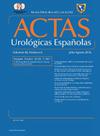Biopsia dinámica de ganglio centinela en cáncer de pene: 25 años de experiencia en un centro oncológico terciario
IF 1.2
4区 医学
Q3 UROLOGY & NEPHROLOGY
引用次数: 0
Abstract
Introduction
Penile cancer lymph node (LN) metastases are critical prognostic factors. The European Association of Urology (EAU) guidelines recommend dynamic sentinel node biopsy (DSNB) as a less invasive alternative for cN0 patients with intermediate- to high-risk tumors. Due to the rarity of penile cancer, lymph node staging tends to be underutilized, and few centers have a significant number of patients to develop the DSNB technique and observe its evolution over time. Previously, our series reported a sensitivity of 66%, and our aim is to contribute to the available evidence, based on 25 years of real-world experience.
Materials and methods
Retrospective single-center study involving 95 groins of 51 patients with intermediate or high-risk penile squamous carcinoma, who underwent DSNB between November 1999 and July 2024. Clinical data, including histology, surgical treatment, and complications, were analyzed. Sensitivity, specificity, positive predictive value (PPV), and negative predictive value (NPV) were calculated. Complications were registered using the Clavien-Dindo system.
Results
The median age of patients was 60 (range 30 – 84) years. 10/51 patients (21%) had metastatic sentinel node. DSNB successfully identified sentinel nodes in 95.7% for right and 89.5% for left groins. The false-negative rate was 8.1%, with a sensitivity of 77%, specificity of 100%, PPV of 100%, and NPV of 92%. 18% (9/51) of patients suffered complications being most of them minor (6/9), 3 patients experimented major complications.
Discussion and conclusion
The updated DSNB outcomes show improved diagnostic accuracy compared to previous reports, reflecting enhanced techniques and learning curves. The study highlights the accuracy and the low morbidity of DSNB.
阴茎癌前哨节动态活检:在三级肿瘤中心25年的经验
阴茎癌淋巴结(LN)转移是预后的关键因素。欧洲泌尿外科协会(EAU)指南推荐动态前哨淋巴结活检(DSNB)作为一种侵袭性较小的替代方案,用于cN0患者中至高危肿瘤。由于阴茎癌的罕见性,淋巴结分期往往未被充分利用,很少有中心有大量患者发展DSNB技术并观察其随时间的发展。之前,我们的系列报告敏感度为66%,我们的目标是根据25年的实际经验,为现有证据做出贡献。材料与方法回顾性单中心研究,纳入1999年11月至2024年7月间行DSNB的51例中、高危阴茎鳞状癌患者的95个腹股沟。分析临床资料,包括组织学、手术治疗和并发症。计算敏感性、特异性、阳性预测值(PPV)和阴性预测值(NPV)。使用Clavien-Dindo系统记录并发症。结果患者年龄中位数为60岁(30 ~ 84岁)。10/51例(21%)有前哨淋巴结转移。DSNB成功识别右侧和左侧腹股沟前哨淋巴结的成功率分别为95.7%和89.5%。假阴性率为8.1%,敏感性为77%,特异性为100%,PPV为100%,NPV为92%。18%(9/51)的患者出现并发症,其中大多数为轻微并发症(6/9),3例出现严重并发症。讨论与结论与之前的报道相比,更新的DSNB结果显示诊断准确性提高,反映了技术和学习曲线的改进。该研究强调了DSNB的准确性和低发病率。
本文章由计算机程序翻译,如有差异,请以英文原文为准。
求助全文
约1分钟内获得全文
求助全文
来源期刊

Actas urologicas espanolas
UROLOGY & NEPHROLOGY-
CiteScore
1.90
自引率
0.00%
发文量
98
审稿时长
46 days
期刊介绍:
Actas Urológicas Españolas is an international journal dedicated to urological diseases and renal transplant. It has been the official publication of the Spanish Urology Association since 1974 and of the American Urology Confederation since 2008. Its articles cover all aspects related to urology.
Actas Urológicas Españolas, governed by the peer review system (double blinded), is published online in Spanish and English. Consequently, manuscripts may be sent in Spanish or English and bidirectional free cost translation will be provided.
 求助内容:
求助内容: 应助结果提醒方式:
应助结果提醒方式:


